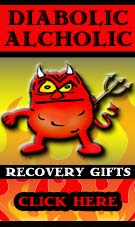|
Alcoholics and Addicts – Helping Them the Old School Way With God’s Power: Compassionate, Sustained, Personal ActionPage 2 The Four Absolutes: To see what Clarence took from Akron and the Oxford Group’s Four Absolutes, one only needs to listen to one of his taped talks. The survival of the Four Absolutes in Cleveland is manifest if you look at the mast-head of the Cleveland Central Bulletin which highlighted Absolute Honesty, Absolute Purity, Absolute Unselfishness, and Absolute Love. When I came to Hawaii, I learned that one of Clarence’s earliest sponsees was Clancy U. who lived on the Island of Oahu, traveled all over the United States visiting AAs, and died just short of his 50th sobriety birthday. Clancy U. was sponsored by both Dr. Bob and by Clarence. He was legendary for concluding his talks by saying, “Remember those Four Absolutes.” The Bible: Clarence forthrightly and frequently told the truth about A.A.’s roots. Like Dr. Bob, he said the program came from the Bible. See our A.A. Legacy, pp. 5, 18, 26, 30, 37, 44, 57-65. He pointed to the Book of James, Jesus’ Sermon on the Mount, and 1 Corinthians 13 as the basic A.A. sources in the Bible. In the early years, Clarence spoke little of Bible specifics, but often of what he called “rummy stories” in the Bible—about Noah (Genesis 9:18-21); the Prodigal Son (Luke 15:11-32); and the Good Samaritan (Luke 10:30-37). Clarence frequently referred to 2 Corinthians 5:17: “Therefore if any man is in Christ, he is a new creature: the old things passed away; behold, new things have come” (NAS). This verse was given to him by A.A. old-timer William Van Horn, and Clarence referred to, and quoted it for the rest of his life. Other Contributions. (1) In 1944, Clarence wrote the first pamphlet ever written concerning sponsorship. Its original title was A.A. Sponsorship—Its Obligations and Its Responsibilities. It was printed by the Cleveland Central Committee with a different title. The full content is included in A.A. Legacy, pp. 78-82. It is a classic on how to sponsor; and it should be in wide distribution and use in A.A. and internationally, though I don’t believe it is. (2) Clarence is credited with the idea of “rotating leadership”—a principle that is followed in most A.A. meetings though virtually ignored in its World Services office and even as to “managers” in other offices. (3) Clarence adhered to and stressed the importance of hospitalization—just as it had been stressed in Akron. (4) Promotion was first and foremost in Clarence’s mind, including using his name and address, in newspapers to facilitate entry by those who were seeking help, He frequently ignored the “attraction” precept—saying “Who would be attracted to a drunk?” A Formula for “Co-Existence” Today
Those who get disgusted with Christian-bashing, idolatry, and intolerance in some A.A. meetings do have a choice. They can get drunk. They can take flight. They can form a new meeting. They can form a new group. They can form a new fellowship. Or they can return to their treatment center, their homeless shelter, their rescue facility, their therapist, their doctor, their clergyman, or their church, religious denomination, or Christ-centered recovery program. They can write books on how A.A. failed them. They can write books unmasking A.A. or calling it a cult or calling it a useful lie. They can return to their former dishonest, criminal, disgusting, destructive behavior. They can criticize A.A., Bill Wilson, Dr. Bob, the steps, the foul language, the meat market mentality, the self-centered talking, or the erroneous theology in A.A. And perhaps such activity is more than justified on occasion. But will they forget the important things that A.A. presented for their choice. They often came from the pit with inconceivable wreckage, and it left them disgraced, ashamed, and afraid. They often were killing their pain or over-expanding their minds with destructive drinking and drugs. They were unwelcome at home, on the job, in the Armed Forces, on the police force or fire squadron, and even among their fellow professionals and workers. Perhaps even in jail. For them and for me, A.A. was the last house on the block. Moreover, you could see the word “God” as you looked in the books and on the walls. You found a zeal to impress upon you that drinking and drug abuse were problems that needed to be solved by abstinence. You found enthusiastic greeters—far surpassing those who had served you as ushers, waiters, and receptionists. You found lots of laughter and friendliness. You found those who really wanted to enjoy life without drinking. And you found there was a program of recovery—albeit more and more flawed as you looked at it carefully and observed the results. There have been judges, doctors, clergy, dentists, policemen, firemen, laborers, farm workers, man and women, criminals, abusers and others who came to A.A. and were not rejected for their past mistakes. I fitted one of those categories. You found friendships easy to make and long-lived. And you found a myriad of ways to avoid loneliness, inactivity, self-pity, shame, friendlessness—all without a drink, a drug, or a trip to the liquor store or a bar. I’ll close this part by asking you: is there something for a Christian to do in A.A. today? There is an account of the return of Jesus to Nazareth where he had been brought up; and, as his custom was, he went into the synagogue on the sabbath day, and “stood up for to read” [as was done when the Word of God was read[. And there was delivered unto him the book of the prophet Esaias. And when he had opened the book, he found the place where it was written: The Spirit of the Lord is upon me, because he hath annointed me to preach the gospel to the poor; he hath sent me to heal the broken-hearted, to preach deliverance to the captives, and recovering of sight to the blind, to set at liberty them that are bruised, To preach the acceptable year of the Lord. And he closed the book. . . . And he began to say unto them, This day is the scripture fulfilled in your ears (Luke 4:18-21). Jesus ministered to sinners galore and healed them. Which reminds me of the sign outside Calvary Rescue Mission where Bill Wilson went to the altar and made his decision for Christ. That sign declared that the Mission was a place where the Carpenter [Jesus] mends broken hearts. And there was a drawing of a rag-tag down-trodden man on the sign. I like to think that the words of Jesus, and the significant picture on the sign at Wilson’s place of conversion, speak volumes about what the Christian can do in A.A. today. For sure, nobody turned me away. Many had weird ideas about some “god.” But I had a sense that I was there to be helped and that they were there to help. And they made that obvious by their hugs, their warm greetings, and their giving me their names and phone numbers to use for help. And I sure did call them—many many times. That was how it all started for me; and, though it was a long time before I found a Christian who helped me, it was not long before I pulled out my Bible and began asking God to tell me what to do, what to say, how to act, and which person to approach in love and service. A Christian is empowered. He has at his beck and call the guidance of God, provided he seeks it in obedience and fellowship. He can bring that same treasure to a newcomer who wants it. Some Barriers That Need Watching: Truthfulness About A.A. History Christians in A.A. today, and, in fact, all AAs and Twelve Step people, need to know where they came from. They need to learn the facts, speak the truth, and accurately share their findings with others. Co-existence does not mean compromising on the truth. And the following facts need to be mastered: Pioneer A.A.’s Christian Sources and Fellowship: Early Akron A.A. was a Christian Fellowship which derived most of its ideas from the Christian Endeavor practices of Dr. Bob’s youth, coupled with some major ideas from the Salvation Army and Gospel Rescue Missions involving conversion, plus some Oxford Group ideas, principal among which were the Four Absolutes. Cured: Early Akron AAs, and the first three AAs themselves, all declared that they had been cured by the power of God; and their statements were widely publicized by A.A. itself, by their own declarations, and by newspapers and magazines across the United States. Believing: Early Akron AAs were required to profess a belief in our Creator, to come to Him through His son Jesus Christ, and to accept the ideas and practices of the Bible, which they called the Good Book.
The James Club Idea: Early Akron AAs laid great stress on the Book of James, Jesus’ Sermon on the Mount, and First Corinthians Thirteen. Later, their Big Book quoted from James; their Steps incorporated specific ideas from James; and they wanted to call themselves “The James Club.” See Dick B. The James Club and The Original Program’s Absolute Essentials. Conversions: The idea that a genuine conversion could bring about healings of alcoholics came primarily from the books and remarks of Professor William James, Dr. Carl G. Jung, Dr. William D. Silkworth, the Salvation Army, the Gospel Rescue Missions, and Bill Wilson’s own conversion at the altar of Rev. Sam Shoemaker’s Calvary Rescue Mission, followed by Bill’s calling on the Great Physician at Towns Hospital and having a conversion experience very similar to that of his own grandfather Willie Wilson who was saved and delivered from alcoholism many years earlier. See Dick B. The Conversion of Bill W. The Big Book Differences: The A.A. Big Book very probably had only one author—Bill Wilson. Its writing was authorized by a close, split vote in Akron. It was then outlined by Bill Wilson and his partner Henry Parkhurst who formed a corporation known as Works Publishing Company, sold stock, issued a prospectus, and had in mind several new and different ideas. Recent research makes a strong case that the earliest drafts originally contained Christian and Biblical materials that were subsequently tossed aside. The outline drafted by Henry Parkhurst called for stories from a wide variety of afflicted people. Parkhurst urged a psychological rather than religious approach. Instead, Bill Wilson closeted himself with Rev. Samuel M. Shoemaker, Jr., and took as his major theme for the first portion of the book an adaptation of the life-changing ideas of the Oxford Group. There is Shoemaker language throughout the Steps and the text portions. Bill also drew on some medical ideas from Dr. William D. Silkworth. He adapted the conversion ideas of William James and Carl Jung and gave them an Oxford Group name—spiritual experience. He quoted portions of the Bible. He used the word “God” with Biblical descriptions of Him such as Creator, Maker, Father, Spirit, Father of Light, together with capitalized pronouns referring to Him, over 400 times. He picked up some New Thought ideas such as “Higher Power,” cosmic consciousness, infinite power, fourth dimension, and so on. For some reason not known to me, he abandoned the “cure” idea of early AAs and adopted the “no cure” teachings of lay therapist Richard Peabody, who died drunk. He adapted some of the Quiet Time ideas he had learned in Akron and in the Oxford Group. And he appeared to adopt a number of the Christian principles found in 1 Corinthians 13. The Personal Story Differences: The personal stories in the back of the Big Book were a different matter. They were not selected for the sobriety the story-teller had attained. In fact, a number of the writers got drunk. However, they were selected to provide a variety of types. Moreover, the stories that were selected were not confined to the stories of pioneers. This fact has been ignored by several purported historians who reviewed only the personal stories and concluded erroneously that all of the pioneers got drunk. But the personal stories themselves, unlike ultimate basic text of the Big Book, frequently mentioned the Bible, Jesus Christ, and Christian literature. Most were written by or provided assistance for writers from the Akron fellowship—where the success rate had been the greatest. Dr. Bob gently described Bill’s own early witnessing failures as follows: “You recall the story about Bill having had a spiritual experience and having been sold on the idea of attempting to be helpful to others. Time went by, and he had not created a single convert, not one. As we express it, no one had jelled” (Co-founders, pp. 10-11). Bill himself later wrote several times that he had been unable to get a single person sober at the beginning. Bill also wrote a well-known letter stating that Dr. Bob had achieved far greater success than the efforts of the folks in the East. And it was the latter situation that caused John D. Rockefeller, Jr., to send his agent Frank Amos to Akron to investigate the actual program being used by this group led by Dr. Bob. The Akron situation Amos investigated, as described and summarized by Amos, prompted both Amos and another Rockefeller colleague to comment that the program was Christian and was much like “first century Christianity.” The Vice of Concealment, Fear, and Timidity
I have found no evidence in my own successful and continuous close association with A.A. or during my own continuous twenty-one years of sobriety that justifies the conclusion that there has been profit to the fellowship, the meetings, or the newcomers in the continued ignoring, distorting, and concealing of history. Regrettably, such has been a judgment call of people who don’t and can’t speak for our fellowship as to what history shall be discussed and what shall be buried. The history of early A.A. is a fact; it just seemed to lose its oomph after Dr. Bob and his wife died, after Bill had his long and deep depression period, and after Bill seemed to favor Lois Wilson’s suggestion that what A.A. needed was a universal program because not all drunks were Christian. I used to doubt the accuracy of Lois’s claim. But that was before I learned about the difference between the Akron program and the Big Book program; before I learned how much Bill had changed the Big Book program from the one he and Bob developed in Akron. Before I learned how all significant references to God, Jesus Christ, and the Bible were removed from the Big Book drafts. Before I learned how strange references to “higher power” were actually inserted. Before I learned how the doctrine of “no cure” was added and how drastically it differed from the statements of the founders and of a host of AAs over a decade. And before I learned how many New Thought and atheist compromises were made a part of the writings. Concealment: The art of concealment makes and leaves no place for truth. That is the reason for cross-examination, impeachment, and rebuttal in court trials. The aim is to get at the whole truth and to unravel the opinions, hearsay remarks, unreliable stories, irrelevant detours bogus documents, lack of best evidence, and reliance on parole evidence that lead to lies and erroneous findings. If the light doesn’t shine, there is darkness. If the lie is believed, the Devil triumphs. We are not dealing with court trials, and perhaps not even with unknowing evil doers who seem to be working for the wrong team. We are, however, having hidden from us the truth of God’s Word and often respond without remembering or seeking the power of God. You may not prevent or change the concealment. You may not see the departure of those who do the cover-ups. And you can look for a human solution and have no better success than the alcoholic who conceals his problem and declines to turn for Divine Aid, as Bill Wilson called the religious solution. Yet here’s what a Psalm of David offered: Hear my voice, O God, in my prayer: preserve my life from the fear of the enemy. Hide me from the secret counsel of the wicked: from the insurrection of the workers of iniquity: Who whet their tongue like a sword, and bend their bows to shoot their arrows, even bitter words: That they may shoot in secret at the perfect: suddenly do they shoot at him and fear not. They encourage themselves in an evil matter: they commune of laying snares privily: they say, Who shall see they search out iniquities: they accomplish a diligent search: both the inward thought of every one of them, and the heart, is deep. . . . The righteous shall be glad in the LORD, and shall trust in him: and all the upright in heart shall glory (Psalm 64:1-6, 10). I firmly believe our Creator will help present the truth of His love, power, and healing abilities if we ask Him. The truth is not necessarily for those who make a free-will choice to disbelieve; but it is mighty important to those who are believers or might become believers if God showed them the way, just as Bill, Bob, and Anne felt He had shown them the way when they did their nose counting in 1937 and saw what He had enabled them to do. Try God! Try God first! Fear: If fear reigns, it needs to be cast out. As A.A.’s own basic text suggests: Contempt prior to investigation is a guarantee of everlasting ignorance. And as soon as fear replaces fact and concealment replaces light and intimidation suppresses openness, the door is open to faulty control, faulty suppositions, and frequent failure. AAs today do not, for the most part, know their history. Prompted by fear from professional chatter and meeting babble, they swallow false gods, false theories, and false solutions. There is fear of reprimand, fear of error and mistakes., and fear of losing status. The simple solution for all that is perhaps to remember President Franklin Delano Roosevelt’s famous statement that: “The only thing we have to fear is fear itself.” A.A. literature, hierarchical control, and dogmatic stubbornness have given rise to meetings and practices riddled with fear and where fear is made king: (1) Fear of the first drink. (2) Fear of relapse. (3) Fear of sharing one’s own experience, strength and hope from God, from Jesus Christ, and from the Bible. (4) Fear of reading any literature or books that are not “Conference Approved.” (5) Fear of holding meetings which discuss history, the Bible, and God in the same breath as the Big Book and Steps. (6) Fear of mentioning “outside issues.” (7) Fear that speaking out constitutes forbidden “cross-talk”—a treatment center term. (8) Fear that A.A. can’t cope with or help anyone but an alcoholic—even though I have really never encountered anyone in A.A. in my 21 years who has only been addicted to alcohol. (9) Fear that this or that principle or practice might be violative of some misinterpreted A.A. Tradition. “The fear of man bringeth a snare; but whoso putteth his trust in the LORD shall be safe” (Proverbs 29:25). “There is no fear in love; but perfect love casteth out fear: because fear hath torment. He that feareth is not made perfect in love” (1 John 4:18). “God is love” (1 John 4:16). The Perennial Sickness Fallacy: One need only listen to the “don’t drink and go to meetings” talk that dominates so many discussions in A.A. to ask forthrightly: “I thought the original AAs were cured of alcoholism.” They were. “I thought pioneer AAs were focused on reliance on God.” They were. “I thought the original AAs stressed Bible study and prayer.” They did. “I thought pioneer AAs read all kinds of religious literature.” They did. “I thought Bill’s Twelve Steps came largely from the life-changing program of the Oxford Group.” They did. “I thought Dr. Bob said the basic ideas of the Twelve Steps came from the study of the Bible.” They did. “I thought early A.A. meetings were devoted primarily to prayer, Bible study, discussion of the application of Biblical principles, surrenders to Jesus Christ, and asking for deliverance from alcohol.” They were. “I thought the original A.A. program stressed hospitalization as a must for the newcomers.” It did. “I thought people in the fellowship worked closely and intensely with newcomers.” They did. “I heard that early pioneers who used those Old School approaches were 40 in number (not 100); that they were considered “medically incurable;” that they were cured by the power of God; that they said they were cured by the power of God; and that they had a documented 75% success rate in Akron among those who really tried, and very soon had a 93% success rate in Cleveland where there was even more widespread and intense work with newcomers.” All these reflections were based on the actual facts. Yet they are seldom heard. Some of these facts can actually be found, though incompletely presented, in A.A.’s own conference approved literature. Also, my 31 published titles and more than 170 articles document the facts. And more and more, non-A.A. biographies and writings are beginning to fill in the same holes with additional, and even the same, truthful details. “. . . If thou wilt diligently hearken to the voice of the LORD thy God, and wilt do that which is right in his sight, and will give ear to his commandments, and keep all his statutes, I will put none of these diseases upon thee, which I have put upon the Egyptians: for I am the LORD that healeth thee” (Exodus 15:26). |




